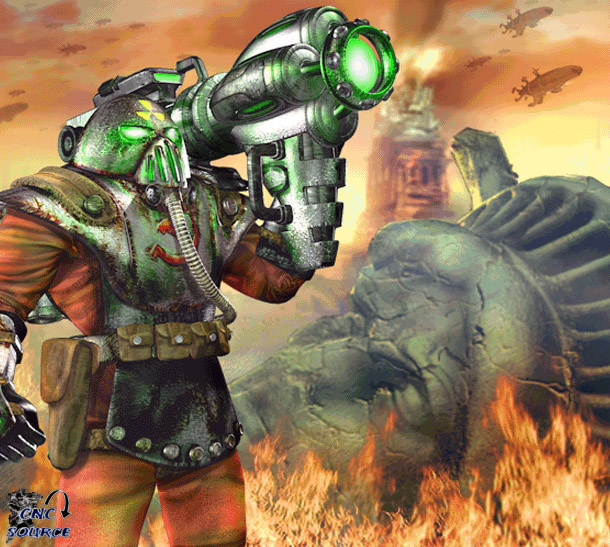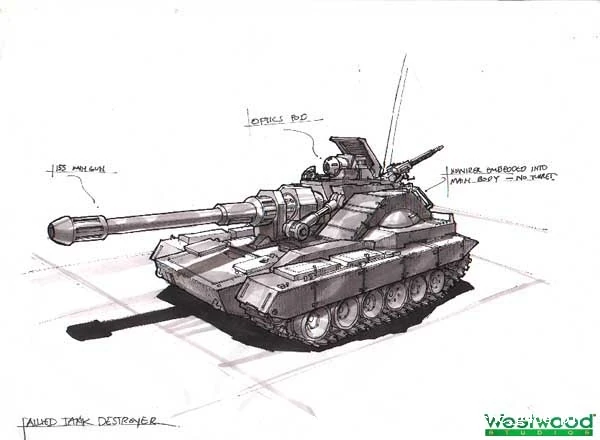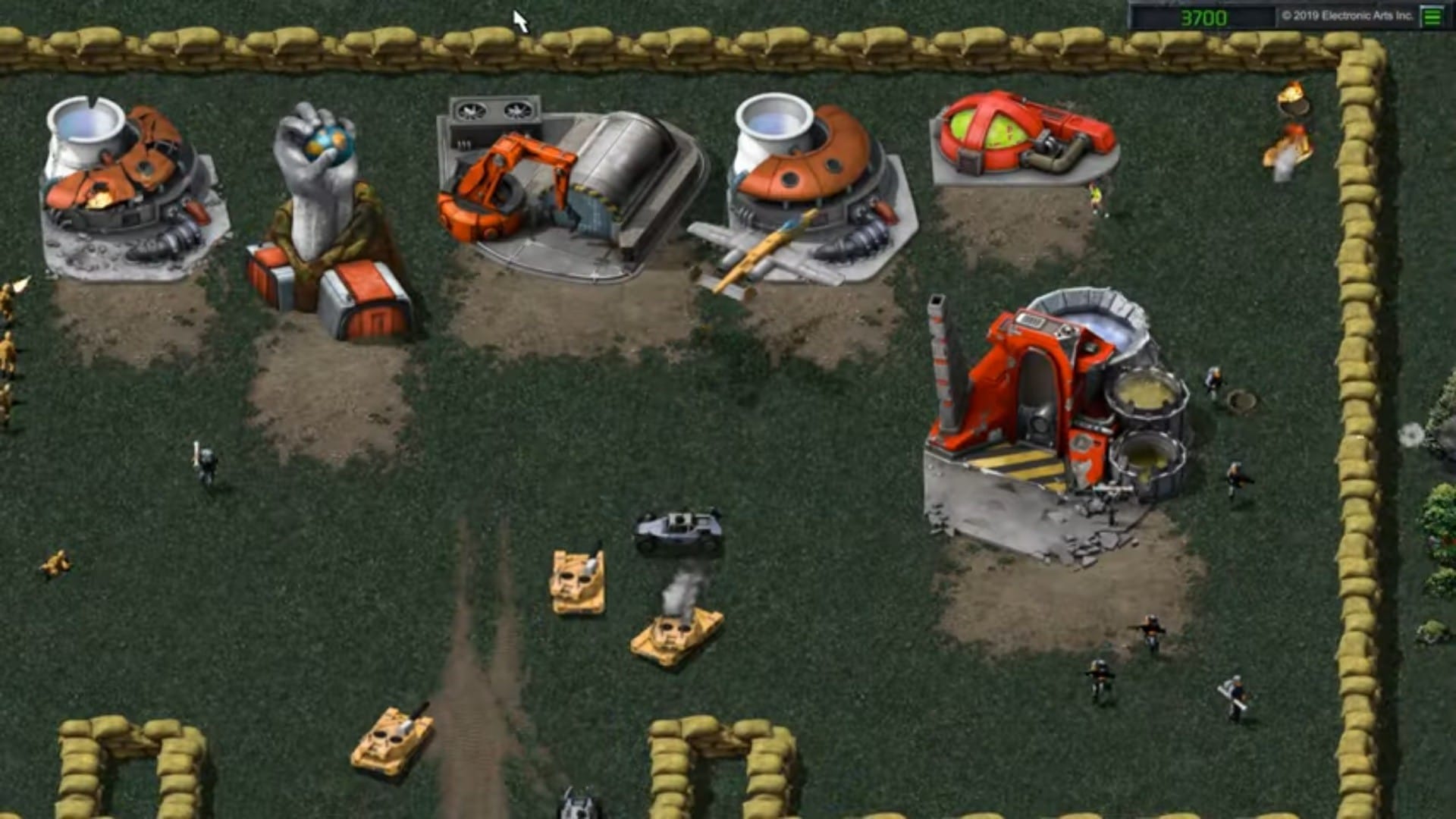
Featured Blog | This community-written post highlights the best of what the game industry has to offer. Read more like it on the Game Developer Blogs or learn how to Submit Your Own Blog Post
Have it your way: a case for sub-factions in strategy games
I see sub-factions as a very useful tool to allow players to identify with a specific play style. They're a way to provide players an opportunity to personalize their play experience and to create expandable content for a game.

Read this article at its original location: Have it your way: a case for sub-factions – Wayward Strategy
One of my all-time favorite games is the 2001 RTS Emperor: Battle for Dune. In some ways, it's not aged particularly well... Even for 2001 its graphics were a bit sub par. Also, the game's UI was a somewhat baffling transparent rainbow sherbet color. The campaign is decent, allowing the player to go through a series of skirmish matches with some light story sprinkled in, interspersed with a couple of commando missions and other story-advancing levels. There are a couple of fun moments - I retain a distinct memory of being attacked by a massive swarm of Tleilaxu units at one point and being unable to stem that tide.
The Tleilaxu were one of the game's sub-factions or Minor Houses, and they had 2 units: their infantry unit (the Contaminator) would convert other infantry units into more of themselves, and the vehicle (the Leech) would do the same to other vehicles... If dealt with promptly, they weren't a problem. But I, at least, didn't deal with them promptly in that mission and struggled with a tiny army against a swarm of units that could steal my units away from me to increase their own numbers. Looking back on it, it was kind of an epic moment.
In any case, this brings me to the real focus of this article: sub-factions. In Emperor: Battle for Dune, there were 5 sub-factions that players could choose from: Tleilaxu, Ix, the Spacing Guild, the Sardaukar, and the Fremen. Each boasted its own unique structure which was able to train (or at least unlock in the barracks/factory? my memory on that is a bit hazy) a unique infantry unit, and a vehicle. This provided a little bit of customization that could provide important functional differences between two dueling Atreides players. Or any mirror match, for that matter. Or otherwise would spice up a single player or skirmish match.

Of course Emperor isn't the only game with sub-factions. Far from it. The Command and Conquer games are rife with them: Red Alert has them, as do Red Alert 2, C&C Generals, and C&C3: Kane's Wrath. In fact, the Iraqi Desolator unit remains one of my all time favorite units in any RTS. Company of Heroes 2 has another take sub-factions this with its Commander system, and if you want to look at it this way, Dawn of War 2 has a form of sub faction that is chosen via a faction's hero unit (for what it's worth, I don't see heroes in WarCraft 3 to be the same sort of thing, we can talk about why that is below).
In this article I'm going to describe what I love about sub-factions and why I'm generally for their inclusion in RTS games. I'm going to attempt to be balanced and address the practical issues with these systems, as well. We'll see how that goes, I suppose.
Let's get started.
First of all... Why?

Sub-factions are another one of those things that have been in the genre almost as long as it's been around. While not dating back to Dune 2 as we found with support powers, we can find sub-factions in games as old as Red Alert, where the faction bonuses are as simple as "10% cheaper vehicles (USSR)" or "10% bonus damage (Germany)"
Red Alert 2, of course, spices this up considerably with a custom unit for each sub-faction, including the Desolator which I mention above, and the Libyan Demolition Truck that could be used in conjunction with the Iron Curtain superweapon to such great effect.
But of course all of this begs the question... why? Is 10% cheaper vehicles, or a single extra unit, really worth a whole new entry into a faction roster? Is that such a meaningful choice to ask players to make? To me, the answer is... In those particular cases, not really. The RA1 and RA2 sub-factions are to me, not the best examples of such a system in RTS. It's not until we get to our other examples that I feel I can begin to build a better case for why someone might want to include or encourage the inclusion of sub-factions in RTS more broadly.
Regarding the presence of sub-factions, I'd like to start with mirror matches. Two players competing, both playing as the same faction/race/army in a game, is one of the most controversial matchups in any game. Some players love them, the mastery of outplaying another person who's using the same tool set that they're using. At least as many (if I had to guess, I'd say far more) people have the opposite opinion: they hate mirror matches, and being forced to engage in combat that more purely about brute, precise efficiency than about leveraging your army's unique features to gain an advantage and secure the win.
I think it's fairly obvious that I fall into the second camp. While mirror matches can be a lot of fun to play, I find them inherently more stressful since they tend to have fewer 'hooks' or unique faction systems on which to hang a win and are decided more purely by the speed at which you can grow your economy and the efficiency with which you can trade units... They're more about the player's precise skill with the core game systems and give the player fewer quirks they can leverage to creatively counter their opponent's strategy.
Sub-factions provide players with access to those unique quirks even in mirror matches. They provide units and systems that throw off the purely mathematical considerations of reaction time and build order and allow players to pursue unique avenues to victory. In Red Alert 2, an Allied player with German Tank Destroyers and an Allied Player with the French Grand Cannon are going to be able to approach the game in different ways, to say nothing of the greater changes seen in sub-factions in other games.

German Tank Destroyer from RA2
It's not just mirror matches where the above applies, of course. A number of games, including most of the C&C games as well as upcoming RTS Immortal: Gates of Pyre utilizes relatively minor faction variations with subfactions in order to effectively create a much larger number of armies in the game without having a unique tech tree, unit models, et cetera. It creates a kind of "best of both worlds" situation between something like Age of Empires 2, whose factions have very minor differences (which is, in my mind, boring) and something like StarCraft of Dawn of War, where factions have major substantial differences between them.
In some ways, Kane's Wrath has 9 factions, even if 6 of those "factions" are relatively minor variations of the major groups.
As a side note, sorry for the excessive use of the word "faction" in this article. It's starting to lose meaning for me, becoming little more than noise. Faction faction faction it's just static at this point.
Anyway, continuing on...
Sub-factions: ideas and variants

GDI Steel Talons sub-faction logo
In some ways, describing the reasons that sub-factions would be included in various games is its own way of presenting a case for them.
In terms of development time and effort, sub-factions really save on the need for additional art assets. Unit variants are easier to produce than entirely new concepts, and the developers don't have to worry about balancing an entirely new roster of units and timings against all of the existing factions in the game. This, of course, is the advantage of a game like Age of Empires 2, where most of the factions are basically minor variants on the same core units and buildings with only a couple of differences to set them apart.
As I said above, the approach of something like C&C3: Kane's Wrath or Immortal splits that difference with 'families' or 'groups' of factions, so players can still get the more unique flavor of armies with some differences to how they approach combat and economy.
Company of Heroes 2 (screenshot below) has another interesting take on the concept of 'sub-factions' with their Commander system.

COH2 has effectively a tremendous number of sub-factions in the game which provides a large number of variants on the game's 5 base factions.
Think about it: in Company of Heroes 2, a Commander might have 2-3 unique unit types, a unique upgrade or support power, possibly 1 or 2 unique abilities or structures. It's all packaged up and divided out over the length just like unique unit variants or support powers in other games with more fixed factions. In some ways, COH2's Commanders are similar to Minor Houses in Emperor: Battle for Dune.
Taking the ideas of Company of Heroes 2 and Emperor: Battle for Dune and mixing them, it's easy to imagine making an RTS with a large and faction-agnostic pool of sub-factions that players could choose between, perhaps bringing several along similar to the Commander system.
Upcoming RTS Immortal: Gates of Pyre is including a subfaction system somewhat similar (though more extensive) to what is seen in Kane's Wrath, where each major army has 2 variants which provide slight differences to playstyle, including unique unit variants, and unique support powers.
Interestingly enough, for all its flaws, I actually thought that the otherwise mediocre RTS Etherium from 2015 had some quite interesting systems including how it handled sub-factions. Maps in Etherium would sometimes contain netural camps which could be destroyed, or could be won via building a specific structure that would improve a player's relation with the camp. Whichever player filled up that sub-faction's reputation bar first would gain control of the camp and the forces associated with it, which would rebuild over time if killed in battle.

This made the entire choice of whether to even attempt to gain the support of the sub-faction a tactical and strategic choice, due to the way buildings and bases worked in Etherium: each base had limited slots, and slots were in limited supply and therefore choosing to devote some of them to capturing a map's sub-faction would mean the player was slowing their tech progression or falling behind in some other way. I have always thought it was a neat system.
Additional considerations

As with all things RTS, subfactions can be hard to balance properly. In Red Alert Remastered, a part of the Command and Conquer Remastered Collection, the bonuses tend to be relatively minor: 10% range, 10% damage, 10% reduced cost, 10% reduced build time... and yet even this game has a 'tier list' for its factions. Kane's Wrath is the same way with 'tiers' of subfactions.
The only real way to handle sub-faction 'tiers' - aside from allowing them, as many games do, is a long cycle of analysis and balancing, which many games cannot afford to do. This might be the largest practical burden to the implementation of sub-factions. Even games with longer development cycles, like COH2 and Halo Wars 2 have struggled to make all of their commander choices attractive to players.
Unless you count heroes in Warcraft 3 to be a sort of 'sub-faction' - this is arguable to me, though neutral heroes make this an interesting case to consider - this sort of thing doesn't feel like it would fit well in the hyper-precise balance of a Blizzard game. A Terran or Night Elf variant with something like melee Marines or melee Archers would really change up how those factions play, and probably mess with the games' delicately balanced counter systems.
:no_upscale()/cdn.vox-cdn.com/uploads/chorus_asset/file/19428091/age2.png?width=700&auto=webp&quality=80&disable=upscale)
Most Age of Empires 2 civilizations are effectively sub-factions of each other
On the other hand, most of the civilizations in Age of Empires 2 feel like sub-factions of a conceptual meta-civilization. The changes from civ to civ are mostly just a handful of units not being present, or custom variant units, similar in some ways to the Desolator or Grand Cannon or Demolition Truck from Red Alert.
Mileage may vary with this sort of implementation. I, personally, love seeing armies in RTS games with large deltas in how they approach combat and economy. Blizzard's games, to me, are a good target for how different factions should be from one another. Even the C&C games (aside from Red Alert 3) have each army posses an identical tech/macro system and I prefer to see a bit more variance between army and economic approaches in the strategy games I play.
To me, sub-factions kind of bridge this gap: they allow for gradations of variation between sides. Halo Wars 2 does this with its gigantic stable of commanders, each with unique units, support powers, mechanics, and hero units. It allows even for 2v2 and 3v3 battles with 4 or 6 players taking the same faction to still be able to surprise their opponent and lean on unique strategies.

With the exception of something like StarCraft 2 or, potentially, WarCraft 3, I see few practical drawbacks to sub-factions in RTS. Especially in the modern era of microtransactions and DLC, which in the case of Company of Heroes 2 and Halo Wars 2, you actually saw the developer (and/or publisher) take this approach to distributing some of the sub-faction content via this approach.
Many players hate to have to pay for extra content, especially something which has an impact on gameplay. I feel like Company of Heroes 2 developed an adequate system for this, with players earning meta-currency via which they can purchase additional sub-factions (as well as other things like skins) without having to worry about paying their hard-earned cash to acquire them.
Conclusion

Sub-factions: have it your way
I see sub-factions as a very useful tool to allow players to identify with a specific play style. They're a way to provide players an opportunity to personalize their play experience, to create expandable content for a game (important for any game seeking to attract a persistent player base over time). While not always the best solution (again, hyper-precise games such as StarCraft 2 probably wouldn't be the best place for such a system), I always like seeing implementations of sub-factions from Halo Wars 2, to Company of Heroes 2, to Emperor: Battle for Dune. I'm even jazzed about seeing what Sunspear Games does with Immortal: Gates of Pyre. Their "Immortals" sub-faction system is right in line with my personal gaming preferences.
I wish I had a more concrete line of reasoning as to why I prefer something like Kane's Wrath or Company of Heroes 2 over Age of Empires' less asymmetrical factions. I might attempt to address this in a future article?
Thanks for reading.
Read this in its original location: Have it your way: a case for sub-factions – Wayward Strategy
Read more about:
Featured BlogsAbout the Author(s)
You May Also Like








.jpeg?width=700&auto=webp&quality=80&disable=upscale)








